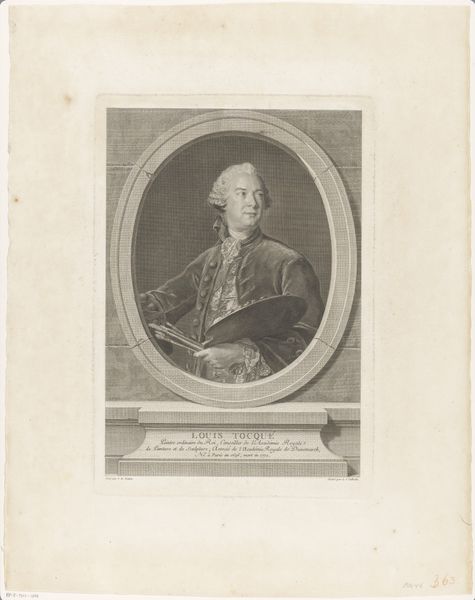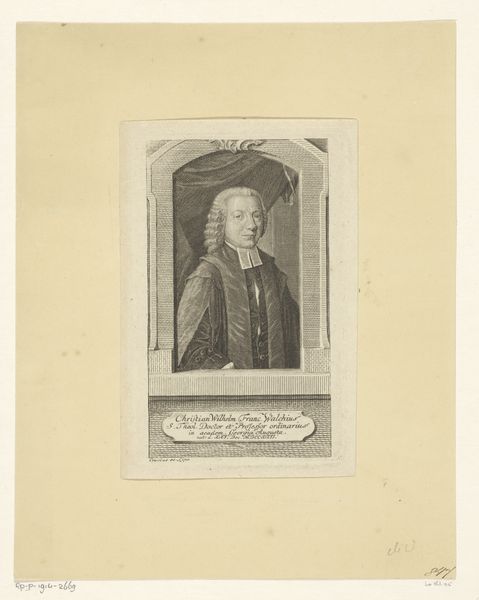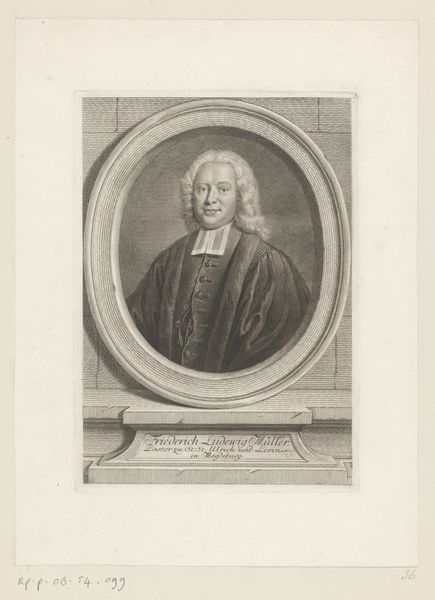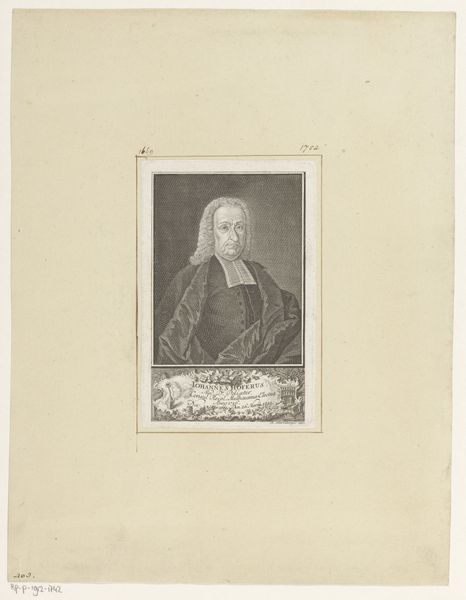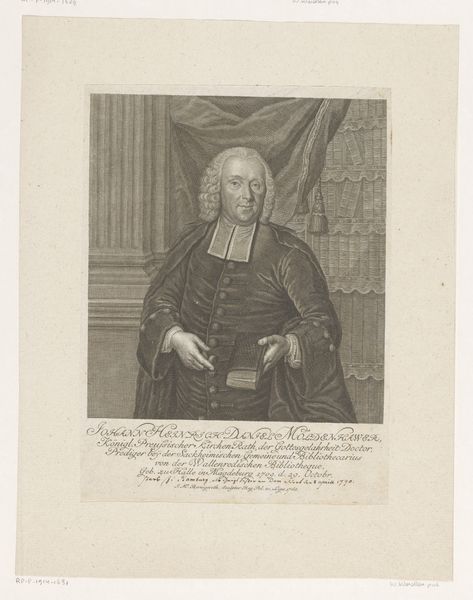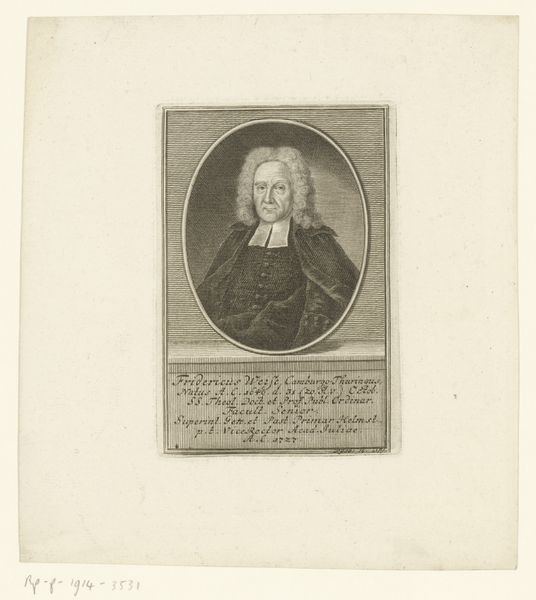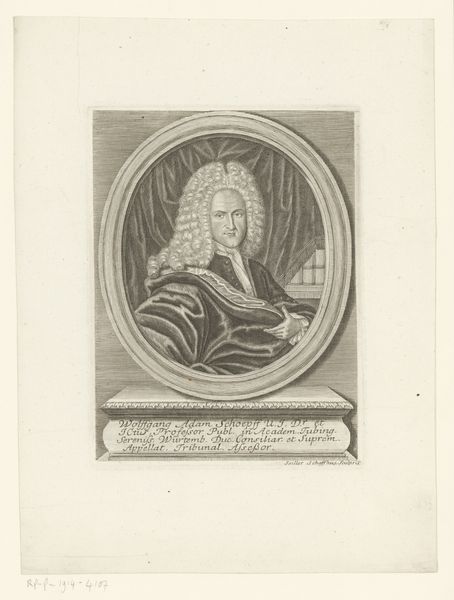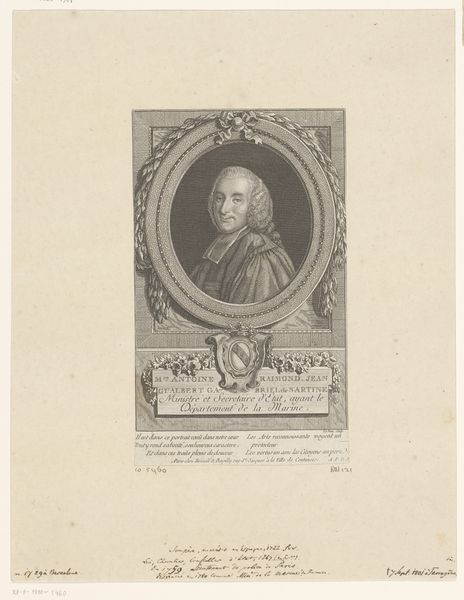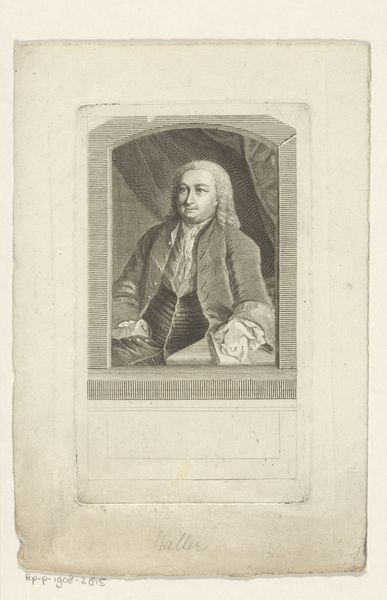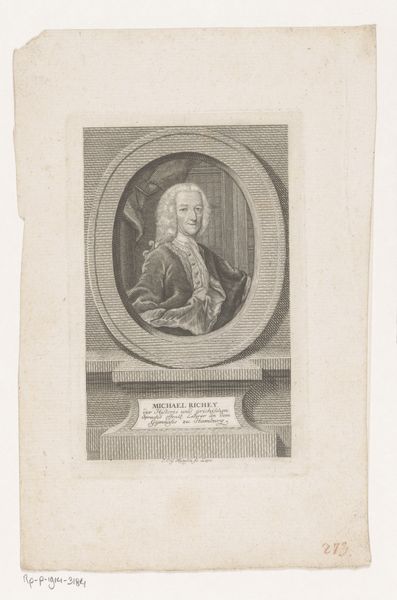
print, engraving
#
portrait
#
aged paper
#
toned paper
#
baroque
# print
#
old engraving style
#
personal sketchbook
#
sketchbook drawing
#
history-painting
#
engraving
Dimensions: height 207 mm, width 163 mm
Copyright: Rijks Museum: Open Domain
Curator: This is Martin Tyroff’s “Portret van Elias Friedrich Heister,” an engraving from sometime between 1740 and 1779. Editor: It's incredible the level of detail he achieved using just engraving! What can you tell me about it? Curator: Let's consider the socio-economic conditions surrounding the creation of this print. Engravings, like this one, democratized portraiture. The means of production allowed for wider circulation. Before, only the elite could commission painted portraits, but prints opened up representation to a broader, if still relatively privileged, segment of society. Think about the labor involved, the artisan's skill versus the social standing of the sitter. What does that contrast tell us? Editor: So you're saying the *making* of this print highlights the social differences, even while making images more accessible? The artist’s craft allowed Heister to be more widely seen? Curator: Precisely! Consider the material of the print itself – paper, ink – relatively inexpensive compared to oils and canvas. This reflects a shift in the art market. What does it mean for art when a portrait becomes a reproducible commodity? The original artwork and reproduction have separate roles. The status is shifted in many ways. Does the rise of reproducible art challenge traditional hierarchies? Editor: It does re-contextualize portraiture... by emphasizing labor and means. Curator: Exactly. It asks us to think about art not just as a representation of the sitter, but as a product of labor, materials, and a changing social landscape. I think considering that provides more in-depth analyses of not only art, but culture too. Editor: That makes perfect sense. Thanks. Curator: My pleasure! It helps reveal art’s crucial function in reflecting the context of production and consumption.
Comments
No comments
Be the first to comment and join the conversation on the ultimate creative platform.
